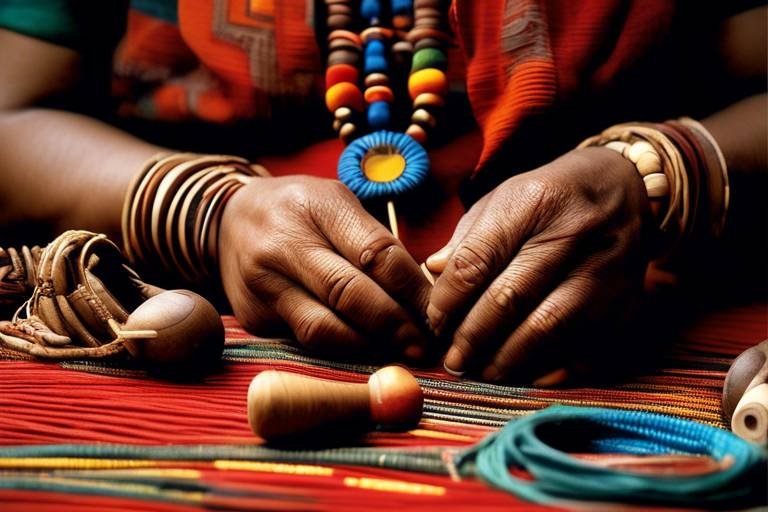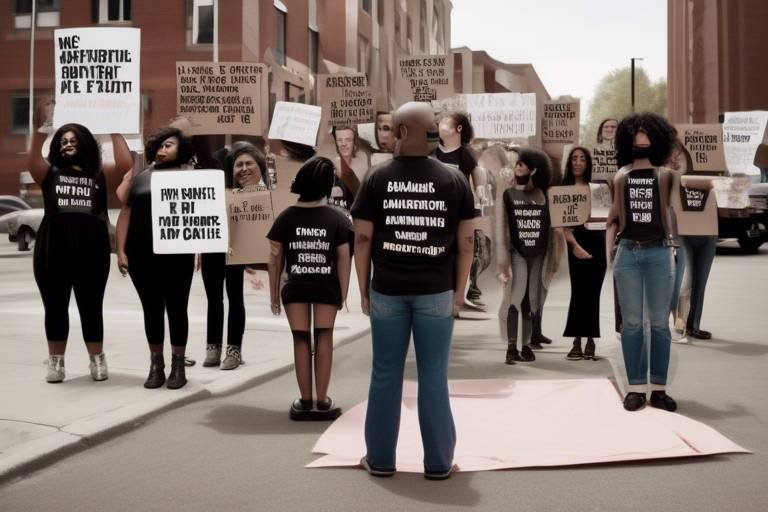The Role of Art in Healing Historical Trauma
Artistic expression has long been recognized as a powerful tool in the healing process for individuals and communities grappling with historical trauma. Through various art forms such as painting, music, dance, and storytelling, individuals can delve into the depths of their emotions, processing and expressing complex feelings that may be difficult to articulate through words alone. Art offers a unique form of therapy, providing a safe space for individuals to explore their past experiences, confront their pain, and ultimately embark on a journey towards healing and empowerment.

Art Therapy Techniques
Art therapy techniques encompass a diverse range of creative practices that serve as powerful tools for individuals navigating the complexities of historical trauma. Through the utilization of various art forms such as painting, music, dance, and storytelling, individuals can engage in a process of self-expression and emotional exploration that traditional talk therapy may not fully capture.
One common technique in art therapy is the use of visual art, where individuals can externalize their internal struggles and emotions onto a canvas, allowing for a tangible representation of their experiences. This visual representation can serve as a catalyst for deeper introspection and healing.
Similarly, music therapy offers a unique avenue for individuals to express their emotions non-verbally through sound and rhythm. The act of creating or listening to music can evoke powerful emotions and memories, providing a therapeutic outlet for processing trauma.
Dance therapy, on the other hand, harnesses the physicality of movement to help individuals release pent-up emotions and reconnect with their bodies. Through dance, individuals can express themselves in a non-verbal way, allowing for a holistic approach to healing.
Storytelling is another powerful art therapy technique that allows individuals to construct narratives around their experiences of historical trauma. By creating and sharing their stories, individuals can gain a sense of agency over their narrative and begin to reframe their experiences in a more empowering light.

Community Healing Through Art
Exploring how artistic expression can aid in the healing process of individuals and communities affected by historical trauma, offering a unique form of therapy and empowerment.
Art has the remarkable ability to bring communities together, fostering a sense of healing, resilience, and solidarity among those who have experienced historical trauma. Through collaborative art projects and initiatives, individuals can find a safe space to express their emotions, share their stories, and support one another on their healing journeys.
Artistic endeavors within communities create a platform for individuals to connect with their shared experiences, finding strength in unity and understanding. The process of creating art together can serve as a powerful tool for processing collective trauma, rebuilding trust, and promoting healing on a communal level.
Furthermore, community art projects can serve as a form of cultural preservation, allowing communities to honor their heritage and traditions through artistic expression. By engaging in art that reflects their cultural identity, individuals can reclaim a sense of empowerment and resilience, instilling a renewed sense of pride and belonging within the community.
Through art, communities can transform their pain into meaningful creations that not only serve as a form of therapy but also as a beacon of hope and inspiration for future generations. The act of coming together to create art can be a transformative experience, enabling individuals to find healing, strength, and connection in the face of historical trauma.
1. How does art therapy differ from traditional therapy methods?
2. Can anyone participate in community art healing projects?
3. What role does storytelling play in community healing through art?
4. Are there specific art forms that are more effective for healing historical trauma?
5. How can communities ensure the ethical use of art in the healing process?

Cultural Reclamation and Empowerment
Cultural reclamation through art serves as a powerful tool for individuals and communities to reconnect with their heritage, traditions, and identity. By engaging in artistic expression that celebrates cultural roots, individuals can reclaim a sense of belonging and pride in their history. This process not only empowers individuals to embrace their cultural identity but also strengthens resilience in the face of historical trauma.
Artistic endeavors that focus on cultural reclamation often involve storytelling, visual art, music, and dance that reflect the rich tapestry of a community's heritage. Through these creative outlets, individuals can explore and honor their cultural traditions, fostering a deeper connection to their roots and a sense of empowerment.
Furthermore, cultural reclamation through art can act as a form of resistance against the erasure of marginalized histories and identities. By showcasing the beauty and resilience of their culture through artistic expression, individuals can challenge dominant narratives and assert their presence in the collective memory.
Artistic projects that center on cultural reclamation not only provide a platform for self-expression but also create opportunities for intergenerational dialogue and knowledge sharing. Through collaborative art initiatives, communities can pass down cultural practices, stories, and values, ensuring that their heritage continues to thrive and evolve.

Art as a Tool for Education
Art has long been recognized as a powerful tool for education, offering a unique and engaging way to learn about complex historical topics such as trauma. Through various art forms like painting, music, dance, and storytelling, individuals can delve into the nuances of historical trauma in a way that textbooks and lectures often cannot capture. By visually representing historical events or emotions, art can evoke empathy and understanding in viewers, allowing them to connect on a deeper level with the experiences of those affected by trauma.

Artistic Expression and Self-Discovery
Artistic expression serves as a powerful tool for individuals seeking self-discovery and emotional healing in the aftermath of historical trauma. Through various art forms such as painting, music, dance, and poetry, individuals can delve deep into their inner selves, exploring emotions, memories, and experiences that may have been buried or suppressed. This process of creative expression allows for a profound journey of self-discovery, enabling individuals to connect with their innermost thoughts and feelings in a safe and supportive environment.
Artistic exploration can unveil hidden layers of one's identity, shedding light on aspects of the self that have been overshadowed by the weight of historical trauma. By engaging in creative activities, individuals can gain insights into their own resilience, strengths, and vulnerabilities, fostering a deeper understanding of themselves and their place in the world. This process of self-discovery through artistic expression can be transformative, leading to personal growth, healing, and a renewed sense of purpose.
Moreover, artistic expression allows individuals to externalize their inner struggles and emotions, transforming intangible thoughts and feelings into tangible works of art. This externalization process can be cathartic, providing a release valve for pent-up emotions and allowing individuals to make sense of their experiences in a symbolic and meaningful way. Through the act of creation, individuals can reinterpret their narratives, reframe their perspectives, and embark on a journey of healing and self-empowerment.

Healing Through Narrative Art
When it comes to healing historical trauma, narrative art emerges as a powerful tool for individuals to process and make sense of their experiences. Through storytelling and visual representation, individuals can delve into the depths of their emotions and memories, allowing for a cathartic release and a reframing of their narrative. Just like a skilled painter layers colors to create depth and meaning in a painting, individuals can layer their stories to uncover hidden truths and find healing in the process.
Imagine narrative art as a mirror that reflects back the innermost thoughts and feelings of individuals, offering them a chance to confront their past and reimagine their future. Through the act of creating art that tells their story, individuals can gain a sense of control and agency over their narrative, transforming pain into resilience and hope. It is through this process of self-expression and reflection that healing can truly begin to take root, allowing individuals to move forward with a renewed sense of strength and purpose.
Furthermore, narrative art not only serves as a personal healing tool but also as a means of connecting with others who share similar experiences. By sharing their stories through art, individuals can find a sense of community and solidarity, knowing that they are not alone in their journey towards healing. Just as a tapestry is woven together from individual threads to create a unified whole, narrative art weaves together the stories of individuals to create a collective narrative of resilience and empowerment.

Artistic Resilience in the Face of Trauma
Artistic Resilience in the Face of Trauma is a powerful concept that highlights the ability of artistic expression to foster resilience, hope, and a sense of agency in individuals and communities grappling with historical trauma. In the face of adversity and pain, art serves as a beacon of light, offering a pathway for healing and empowerment.
Through various art forms such as painting, music, dance, and storytelling, individuals can channel their emotions, experiences, and struggles into creative outlets that not only help them process trauma but also build inner strength and resilience. Artistic expression becomes a tool for self-expression and reflection, allowing individuals to navigate their pain and transform it into something beautiful and meaningful.
Artistic resilience is not just about creating art; it's about the journey of self-discovery and healing that comes with the process. By engaging in artistic practices, individuals can explore their innermost thoughts and feelings, confront their trauma, and find a sense of catharsis and release. Art becomes a safe space where vulnerability is embraced, and healing is nurtured.
Moreover, artistic resilience extends beyond individual healing to community empowerment. Through collaborative art projects and initiatives, communities can come together to share their stories, support one another, and collectively heal from the wounds of historical trauma. Art becomes a bridge that connects people, fostering solidarity and strength in the face of adversity.
Artistic resilience in the face of trauma is a testament to the transformative power of art. It demonstrates that even in the darkest of times, creativity and expression can illuminate the path to healing and renewal. By embracing art as a tool for resilience, individuals and communities can find the courage to confront their past, embrace their present, and envision a brighter future.

Challenges and Opportunities in Art-Based Healing
When it comes to utilizing art as a tool for healing historical trauma, there are both challenges and opportunities that arise. One of the main challenges is ensuring that the artistic process is respectful and sensitive to the experiences of individuals and communities affected by trauma. It is crucial to navigate the fine line between artistic expression and potential re-traumatization, making ethical considerations a top priority.
Additionally, there may be challenges in accessing art-based healing resources, especially for marginalized communities with limited resources or exposure to artistic practices. Overcoming these barriers requires a concerted effort to make art therapy and healing initiatives more accessible and inclusive.
On the other hand, the opportunities presented by art-based healing are significant. Art has the power to transcend language barriers and cultural differences, providing a universal medium through which individuals can connect and heal together. By harnessing the creative potential of art, communities can foster empathy, understanding, and resilience in the face of historical trauma.
Moreover, art-based healing offers a unique opportunity for individuals to reclaim their narratives and empower themselves through creative expression. By engaging in art that celebrates cultural heritage and traditions, individuals can strengthen their sense of identity and agency, promoting healing and personal growth.
Frequently Asked Questions
- What is art therapy?
Art therapy is a form of therapy that utilizes various art forms such as painting, music, dance, and storytelling to help individuals process and express complex emotions related to historical trauma. It provides a creative outlet for individuals to explore and communicate their feelings in a non-verbal manner.
- How can art help in healing historical trauma?
Artistic expression can aid in the healing process of individuals and communities affected by historical trauma by providing a means of self-expression, reflection, and empowerment. Through engaging in art, individuals can explore their experiences, emotions, and narratives in a safe and supportive environment, leading to emotional healing and resilience.
- Can art projects within communities foster healing?
Yes, art projects and initiatives within communities can foster healing, resilience, and solidarity among those impacted by historical trauma. By engaging in collaborative art activities, individuals can create a sense of belonging, connection, and support, which are essential elements in the healing process.
- How does art promote cultural reclamation and empowerment?
Engaging in art that celebrates cultural heritage and traditions can empower individuals to reclaim their identity, strengthen resilience, and foster a sense of pride and belonging. Through artistic expression, individuals can reconnect with their cultural roots, traditions, and history, promoting a sense of empowerment and cultural continuity.
- Is art effective in educating others about historical trauma?
Art can be a powerful tool for educating others about historical trauma by fostering empathy, understanding, and promoting healing. Through visual storytelling and artistic expression, individuals can convey complex narratives and emotions related to historical trauma, raising awareness and promoting dialogue and understanding.
- How does art facilitate self-discovery and emotional healing?
Art plays a significant role in facilitating self-discovery, personal growth, and emotional healing for individuals grappling with historical trauma. Through artistic expression, individuals can explore their inner thoughts, emotions, and experiences, leading to self-reflection, insight, and personal transformation.
- Can storytelling and visual art help individuals process trauma?
Storytelling and visual art have the power to help individuals process and reframe their experiences of historical trauma by providing a creative outlet for expression, reflection, and meaning-making. Through storytelling and visual art, individuals can transform their narratives, find new perspectives, and promote healing and resilience.
- How does artistic expression cultivate resilience in the face of trauma?
Artistic expression can cultivate resilience, hope, and a sense of agency in individuals and communities affected by historical trauma by providing a means of empowerment, self-expression, and creative coping. Through engaging in art, individuals can tap into their inner strength, creativity, and resourcefulness, leading to resilience and empowerment.
- What are the challenges and opportunities in art-based healing?
While art-based healing offers transformative opportunities for healing and empowerment, there are also potential challenges and ethical considerations to consider. These may include issues related to cultural appropriation, representation, and accessibility. However, by addressing these challenges thoughtfully, art-based healing can create meaningful and impactful change in individuals and communities.



















